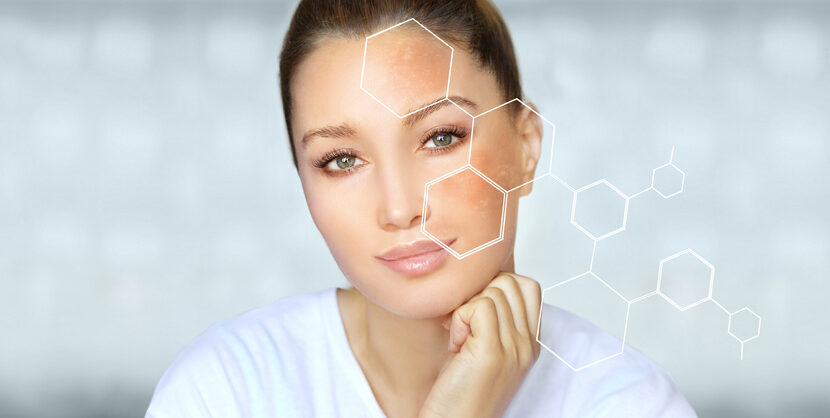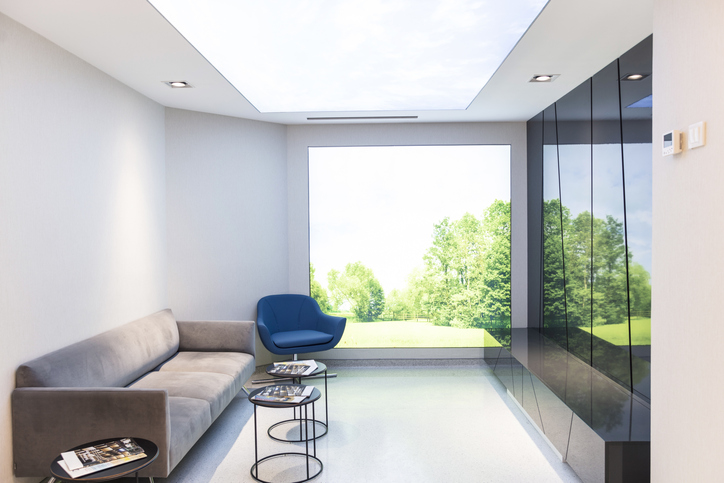In your thirties, do you suddenly notice something different about your skin when you look in the mirror? In your thirties, you may start to notice changes in your skin, and your worries are likely to increase.
Blemishes, in particular, are one of the major beauty concerns for people in their 30s. However, with proper countermeasures and knowledge, clear skin is not a dream. Here, we focus on problems specific to skin in one's thirties, especially blemishes, and introduce clear and effective approaches, from measures that can be taken in daily life to specialized cosmetic treatments. Start here to take the first step toward taking care of your own skin.

Graduated from the Faculty of Medicine, National Kumamoto University. After serving as the director of major beauty clinics in Japan, etc., he opened Aladdin Aesthetic Clinic in 2023. He is a professional in aesthetic medicine with a doctorate in anti-aging research and many years of experience. With the motto of "Toward the realization of cosmetic medicine without lies," he aims to be the "Only One" together with his patients.
Basic knowledge of stains you need to know!

Understanding the basics of blemishes is essential to maintaining beautiful skin. Blemishes are not just a cosmetic issue; they are also a sign that reflects the health of the skin.
This section delves into the details of why and how blemishes appear on the skin, their types and characteristics. It also explains the link between skin aging and blemishes, and how sun exposure affects blemishes. With this knowledge, you will be able to take more effective measures against blemishes.
Types and characteristics of stains
Blemishes have a wide variety of causes and characteristics that must be addressed accordingly. They are mainly divided into the following types
- senile pigmentation
This is the most common type of blemish caused by sun exposure. Prolonged exposure to ultraviolet rays causes the skin to overproduce melanin, which appears as small, flat brown spots. They are especially common on the backs of the hands, face, and neck, and UV protection is the key to prevention. - chloasma
Melasma" and spots are not entirely different, but a type of blemish. This type is especially common in women, and is greatly affected by changes in hormonal balance. Often caused by pregnancy or the use of oral contraceptives, melasma usually appears symmetrically on both sides of the face and may be aggravated by sun exposure. - post-inflammatory hyperpigmentation
This type of hyperpigmentation is seen after skin inflammation, such as acne or scars, has healed. It occurs when melanin in the skin concentrates at the site of inflammation and pigmentation sets in. The degree of effect varies with skin color, and is particularly common in people with darker skin tones. - freckles
Freckles are small brown spots that are largely influenced by genetic factors and appear primarily on the cheeks and nose of the face. They are formed when melanin pigment concentrates in certain small areas of the skin. Freckles become more pronounced primarily after exposure to ultraviolet light and tend to appear more clearly during the summer months and fade during the winter months.
Understanding the characteristics of these spots is critical to taking appropriate measures. Sun protection is different for senile pigmentation, hormone balance management for melasma, and appropriate inflammation management and preventive measures for post-inflammatory hyperpigmentation. In addition, treatment methods also differ depending on these types, so attempting treatment based on easy judgment may halve the effectiveness of the treatment.
Relationship between sunburn and the formation of blemishes
Ultraviolet radiation is the most common cause of blemishes. When exposed to UV light, the skin attempts to protect itself by producing melanin. This process produces excess melanin, which can remain on the skin as hyperpigmentation. Therefore, sun protection is the basis of blemish control, and daily UV protection is important.
What causes spots after 30s? Even how to prevent it!

While skin aging is a natural physiological phenomenon, the accompanying development of blemishes is a matter of concern for many people; after one's thirties, the skin begins to lose key elements that help it retain its youthfulness, and blemishes are more likely to appear. Here we will delve into the deep connection between skin aging and the formation of blemishes.
Cause 1|Decrease in collagen and elastin
After one's thirties, the amount of collagen and elastin in the skin begins to decrease. These are important components that support the skin's elasticity and structure, and their decrease causes the skin to lose its elasticity, resulting in fine wrinkles and sagging. In addition, the skin's ability to heal itself also declines, and small scars and inflammation are more likely to remain as blemishes.
Cause 2|Accumulation of UV damage
UV damage sustained in youth can accelerate skin aging over time and promote the formation of blemishes. As mentioned above, UV rays reach deep into the skin, damaging DNA and stimulating melanin production. As aging skin is less able to recover from this damage, melanin overproduction becomes more pronounced as spots.
Cause 3|Changes in hormonal balance
Especially in women, the hormonal balance changes from the thirties through menopause, and this affects the condition of the skin. A decrease in estrogen causes skin dryness, and dry skin is more vulnerable to external stimuli. Hormonal changes also result in uneven melanin production, causing blemishes and uneven skin tone.
Is it still safe for 20-somethings to deal with blemishes?
The 20s is a critical time for maintaining skin health and reducing the risk of future blemishes. During this period, the skin has a high level of cellular regeneration and still retains sufficient resilience to damage. Therefore, early preventive measures can delay skin aging and prevent future blemishes and skin problems.
Regular visits to a dermatologist beginning in your 20s are also important for skin health care. Through the advice of a specialist, you can accurately assess the condition of your skin and find the right care regimen for your individual skin type.
What is the recommended anti-spotting strategy for people in their 30s and beyond?
As mentioned earlier, in one's thirties, the skin begins to age and the development of blemishes becomes more of a concern. However, there are several countermeasures that can be taken, although they are not limited to people in their 30s and beyond. With appropriate measures that can be incorporated into daily life, spots can be prevented.
First, daily use of sunscreen is essential to prevent sunburn. Since ultraviolet rays are the main cause of sun spots, regular reapplication of sunscreen and the use of hats and parasols to avoid strong sunlight are recommended to protect the skin.
Next, proper skin care is critical to maintaining skin health. In particular, moisturizing after cleansing helps maintain the skin's barrier function. Products containing ingredients such as vitamin C and retinol help maintain skin elasticity and prevent blemishes.
Stress management is also an important aspect of skin health in a busy working life. Relieving stress through hobbies and exercise, as well as ensuring a good night's sleep, can help improve skin resilience and prevent blemishes.
These daily measures lay the foundation for protecting skin health and preventing blemishes in one's thirties and beyond.
The link between stress and blemishes in working adults.

Working life is often overlooked in terms of the effects of stress caused by busyness and responsibility on the skin. This section explores in detail how daily stress can affect the health of the skin, especially the formation of blemishes.
Stress and Skin Health
Working life is constantly accompanied by stress due to work pressures and daily busyness. Stress is an important factor that has a direct impact on skin health. Stress can lead to hormonal imbalances that can negatively affect the condition of the skin. In particular, excessive secretion of cortisol, known as the stress hormone, accelerates skin aging.
Effects of stress on cortisol
Cortisol is a hormone produced by the body when under stress. Excess cortisol decreases the skin's natural moisturizing factors, causing skin dryness and sensitivity. This weakens the skin's barrier function and reduces its resistance to damage from the external environment. Cortisol also stimulates melanin production, causing blemishes and uneven skin tone.
Sleep deprivation and skin regeneration
Sleep deprivation is a common problem in working life. Proper sleep is necessary for skin cell regeneration and repair, and lack of sleep reduces skin resilience. During sleep, skin cell division is most active, new cells are produced, and damaged cells are repaired. Insufficient sleep accelerates skin aging and accelerates the formation of blemishes.
Stress Management and Skin Care
Stress management is important in preventing blemishes and maintaining healthy skin. Relaxation techniques, hobbies, moderate exercise, and quality sleep can help reduce stress levels. Eating an antioxidant-rich diet and incorporating stress-fighting skin care products are also effective ways to reduce stress-induced skin damage.
Importance of diet and its impact on blemishes

Beautiful skin depends not only on external care, but also largely on nutritional intake from the inside. Especially after one's thirties, a well-balanced diet is extremely important for preventing skin aging and blemishes. A healthy diet contributes not only to the skin but also to overall health. Balanced nutritional intake and proper hydration are important not only to prevent blemishes, but also to maintain youthful skin.
Importance of Antioxidants
Antioxidants protect the skin from free radicals that cause skin aging. These substances are abundant in foods such as fresh fruits, vegetables, nuts, and olive oil.
|
Vitamins C, E, selenium, and zinc, in particular, help the skin synthesize collagen, protect the skin from UV damage, and contribute to the prevention of blemishes.
Importance of Hydration
Adequate hydration is essential for maintaining healthy skin. Insufficient hydration leads to skin dryness, which can cause blemishes and wrinkles, and consuming the required daily amount of water (generally about 2 liters for adults) helps to maintain the skin's moisture balance and keep the skin healthy.
Evolution of Cosmetic Medicine and Blemish Treatment

The field of cosmetic medicine has evolved rapidly in recent years due to technological innovation and scientific research. This evolution is particularly evident with regard to the treatment of blemishes, where a variety of cutting-edge treatments have emerged. These new approaches offer a variety of options for treating blemishes more effectively and safely.
Effective treatment for blemishes 1|Dermapen
The Dermapen procedure uses a fine needle to puncture microscopic holes in the skin to promote the natural skin renewal process. Through this approach, the skin activates collagen and elastin production, resulting in improved skin elasticity and suppleness. This treatment is effective in reducing pigmentation of blemishes, acne scars, pore problems, wrinkles, and can be used for a variety of skin concerns.
The Dermapen 4 model incorporates the latest technology in this field and has a finer needle and an automatic vibration function, resulting in less discomfort during treatment and faster skin recovery after treatment. However, since the skin is more sensitive after treatment, proper moisturizing and UV protection are required. The advantages of this method are deep skin irritation, less pain, less noticeable scarring, and shorter downtime after treatment.
Effective Treatment for Blemishes 2|Lumecca
Lumecca is known as an advanced Intense Pulsed Light (IPL) light therapy device for blemishes and vascular lesions. This treatment, approved by the U.S. FDA, delivers specially designed light energy to the skin to improve spots, freckles, and redness of the skin. This process can also be expected to improve skin texture.
The superiority of Lumecca lies in its ability to help the skin regenerate collagen fibers and elastin, resulting in skin rejuvenation. Compared to conventional light therapy devices, Lumecca is characterized by significant improvement after only one to three treatments. The treatment process effectively targets melanin and capillaries, stimulates collagen production in the skin to bring tautness and hydration, and activates skin turnover.
Effective Treatment for Blemishes 3|Milanolypie
Milan RePeel is a peeling treatment for skin renewal and beauty that effectively combines five acids: trichloroacetic acid (TCA), lactobionic acid, salicylic acid, tartaric acid, and citric acid. This diverse combination of acids allows us to treat not only the superficial layers of the skin, but also the deeper layers. The treatment removes dead skin cells and activates skin cells. Specifically, the stimulation of amino acids and vitamins stimulates an increase in type III collagen and supports the production of elastin and hyaluronic acid.
This treatment is also designed to keep the skin moisturized and contains moisturizing ingredients such as squalane, vitamins B and C, GABA, and arginine. While trichloroacetic acid is used in high concentrations, its unique formulation reduces discomfort during the treatment. Milan RePeel can be applied to the face, neck, décolleté, and body, and is effective in treating a wide variety of skin problems, including acne, blemishes, dullness, wrinkles, sagging, dark spots, and dryness, as well as improving skin problems in hidden areas.
Effective Treatment for Blemishes 4|Velvet Skin
The procedure, called Velvet Skin, is a novel approach that combines dermapen and massage peel techniques to bring elasticity and radiance to the skin. In this procedure, a dermapen is first used to make fine holes in the skin, and then a special cosmetic agent, PRX-T33, is applied. This process allows the agent to penetrate the deeper layers of the skin, significantly stimulating collagen production.
PRX-T33 is based on trichloroacetic acid, hydrogen peroxide, and kojic acid, which in combination effectively activate skin fibroblasts and contribute to the suppression of melanin production. This unique formula is expected to reduce the risk of inflammation while improving the appearance of blemishes, dullness, acne scars, open pores, and dull, wrinkled skin. Velvet Skin is a remarkable procedure that aims to improve the overall quality of the skin through the synergistic action of these ingredients.
What is the key to getting cosmetic treatment?
When undergoing cosmetic procedures, several important points should be kept in mind. First, choosing the right clinic is the key to success. When choosing a clinic, focus on the type of procedures the clinic offers, the doctor's track record, and the quality of the counseling. The cleanliness of the clinic and the safety of the equipment used are also important checkpoints.
Preparation before treatment is also important. It is important to understand the treatment plan and expected results through a detailed consultation with the doctor and to share health and allergy information. In addition, smoking and alcohol consumption can affect post-operative recovery, and these should be avoided prior to treatment.
Post-treatment aftercare is essential to maximize treatment results and minimize risks. Because medical procedures may involve risks and side effects, it is important to follow the doctor's instructions for proper skin care and to protect the skin from UV rays, especially during periods when the skin is sensitive. It is also recommended to check the effectiveness of the treatment through regular follow-ups and to receive additional care as needed.
Keeping these points in mind will make your experience with cosmetic medicine safer and more satisfying.
summary
Here we have focused on countermeasures against blemishes in one's thirties, ranging from daily preventive measures to cosmetic medical approaches. The key is to understand your skin condition and choose appropriate measures. Choosing a clinic and taking care of your skin before and after treatment are also important. Use this knowledge to take the first step toward keeping your skin beautiful in your 30s and beyond. Anti-dark spots are an investment in protecting your skin. The shortcut to clear skin starts now.
At Aladdin Aesthetic Clinic, based on our many years of experience in cosmetic medicine and cosmetic dermatology and the knowledge of our doctoral degree, we provide counseling that aims to be "only one", offering the best treatment for each person we meet. We offer only the necessary treatments without any unnecessary information or suggestions.
Feel free to use our official LINE account for 24-hour counseling and reservations. Please feel free to contact us for free counseling for the first time or if you have any concerns.





